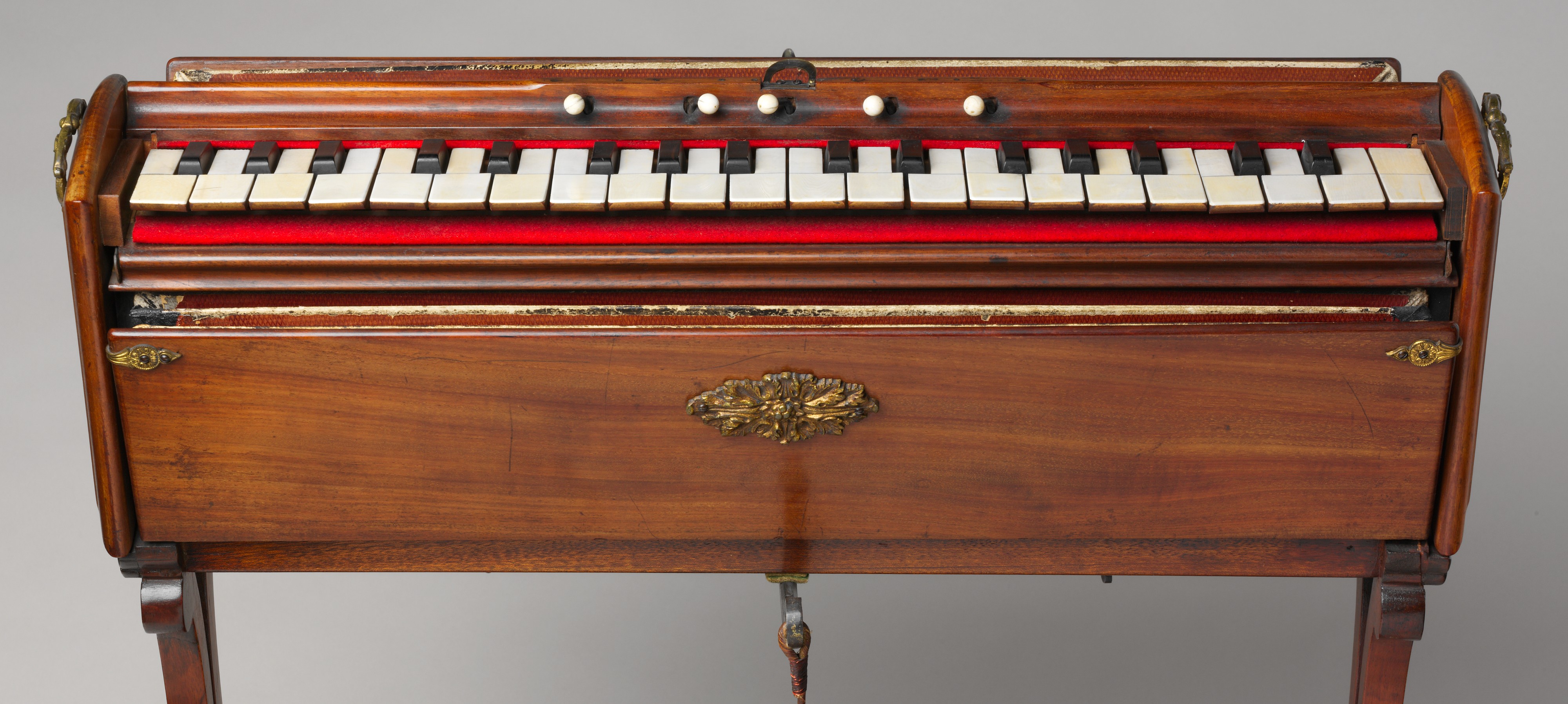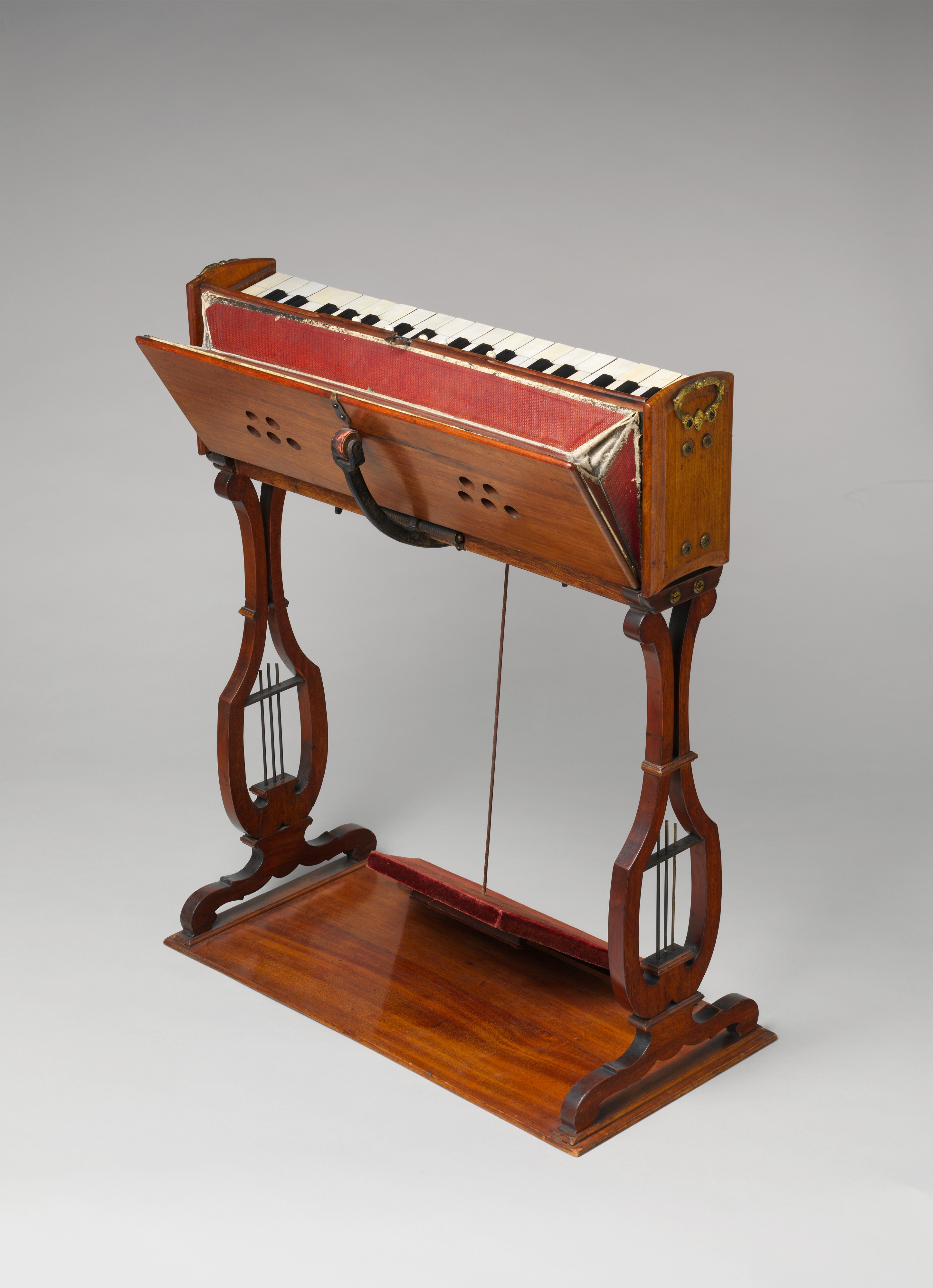Reed Organ (Physharmonica)
Attributed to Alexander-François Debain French
The physharmonica is a small version of the melodicon and harmonium. Designed in Vienna in 1821 by Anton Haeckl, the physharmonica stood in many parlors by the end of the nineteenth century. This example is attributed to the French builder Alexander Debain based on its similarities with other instruments by him (including Met example 1986.101). Debain was a builder of reed keyboard instruments including accordions, harmoniums, and physharmonicas.
Technical description: Small rectangular mahogany chest with short ivory and ebony f-f3 keyboard on (narrow) top edge, single-fold wedge bellows on back, double-fold wedge reservoir on front, keys operate pallet valves on bellows side, admitting wind through internal duct to brass pressure reeds on reservoir side of chest; top 2 octaves have 2 sets of unison reeds, 1 set controlled by ivory stop knob above keyboard; 4 other stops open swell and exhaust valve; bellows pumped by trapezoidal velvet-covered pedal on solid flat base connecting 2 slender lyre supports to which chest is attached by wing nuts on 2 screws embedded in bottom of chest; brass mounts on side panels and front; side panels conceal spring latches hold valves and reed chambers closed.
Due to rights restrictions, this image cannot be enlarged, viewed at full screen, or downloaded.
This artwork is meant to be viewed from right to left. Scroll left to view more.






